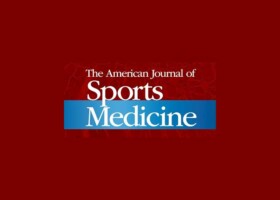
Authors:
Hoang LQ, Vaish B, Izuagbe SI, Co C, Borrelli J, Millett PJ, Tang L.
Abstract:
Background:
The healing capacity of the human glenoid labrum varies by tear location. Current evidence suggests that the healing capacity of meniscal and cartilage injuries relates to cellular composition and vascularity. However, little is known about the histological characteristics of the glenoid labrum and how they may affect healing potential in specific anatomic regions.
Hypothesis:
Regenerative characteristics of the glenoid labrum differ based on the anatomic region.
Study design:
Descriptive laboratory study.
Methods:
Human glenoid labra from fresh unpreserved cadavers were transversely sectioned in different anatomic regions. Masson trichrome stain was used to determine dense and loose extracellular matrix regions and vessel densities. Hematoxylin and eosin, Ki-67+, and CD90+/CD105+ stains were performed to determine total, proliferative, and progenitor cell densities, respectively. Regression models demonstrated relationships between vascular area, progenitor cell quantity, and probability of successful operation.
Results:
Among all labral aspects, the superior glenoid labrum had the highest percentage (56.8% ± 6.9%) of dense extracellular matrix or avascular tissue (P < .1). The vascular region of the superior labrum had the fewest total cells (321 ± 135 cells/mm2; P < .01) and progenitor cells (20 ± 4 cells/mm2; P < .001). Vascular area was directly correlated with progenitor cell quantity (P = .006002). An increase in probability of successful operation was associated with a linear increase in vascular area (R2 = 0.765) and an exponential increase in progenitor cell quantity (R2 = 0.795). Subsequently, quadratic models of vascularity and progenitor cell quantity around the labral clock were used to assess relative healing potential. Quadratic models for percentage vascular area (P = 6.35e-07) and weighted progenitor cell density (P = 3.03e-05) around the labral clock showed that percentage vascular area and progenitor cell quantity increased as labral tissue neared the inferior aspect and diminished near the superior aspect.
Conclusion:
Anatomic regions of the glenoid labrum differ in extracellular matrix composition, vascularity, and cell composition. The superior glenoid labrum is deficient in vascularity and progenitor cells, which may explain the high failure rates for repairs in this location.
Clinical relevance:
Improved understanding of the composition of distinct glenoid labral positions may help to improve therapeutic strategies for labral pathology.
For the complete study: Histological Analysis of Regenerative Properties in Human Glenoid Labrum Regions

